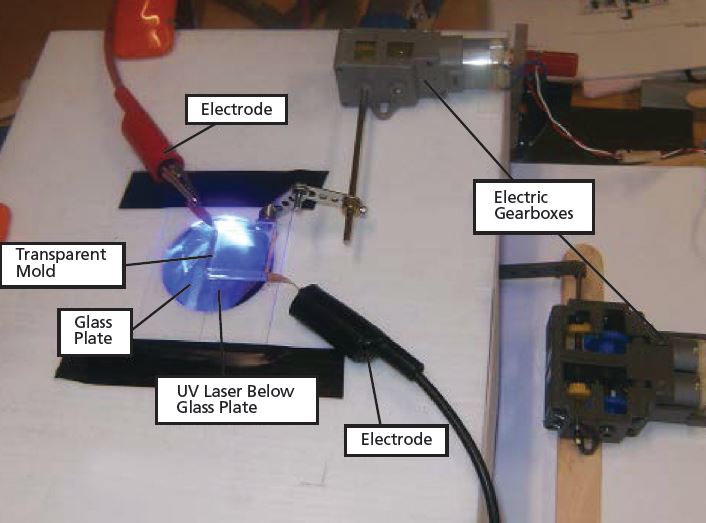Recently, I have had the opportunity to better understand how materials development will determine the future of industrial metal 3D printing, consumer 3D printing and 3D bioprinting. Previously, my observations have pertained to the sphere of manufacturing with single or multiple materials, as I had not yet realized that there is an entire family of materials whose effects on the future of manufacturing may be even more disruptive: composites. They are the base for FALCom, a 3D printing process being studied by Larry Holmes at the US Army Research Laboratory (ARL) in Maryland.
Saying that composites are new materials is not entirely correct. The earliest man made composite material, straw and mud combined for making bricks, is several thousands years old. In general, composites are made from two or more materials with significant different physical and chemical properties. Nowadays, scientists can push the limits of the materials they are able to combine and can engineer advanced composite cements, fiber-reinforced polymers, metal composites and composite ceramic and metal matrices: all perfect to be tailored for use in additive manufacturing.
Last year, Holmes received a patent for the new additive manufacturing technology which he used to create micro-composites, tailored for specific end-use applications that require high-strength lightweight materials. The Field Aided Laminar Composite (FALCom) method can be used to make multifunctional parts, that is embedded sensors and electronics, as a single unit, reducing space, weight, time and costs.
“Anytime we can add multifunctionality, we are helping with space and weight savings,” said Holmes. “Embedded sensing, embedded heat-sinks and embedded electronics – all of these things help with trade space. FALCom offers a way of making these types of things with regard to 3D printing”.
The research originally presented by Holmes builds upon the FAiMTa (Field Aided MicroTailoring) technology in the design of a processing system that allows for nano- to micro-scale fillers to be aligned and oriented in a liquid photopolymer solution, before being locked in place by the laser curing of the photopolymer matrix.
The Field-Aided Laminar Composite (FALCom) processing technology is the realization of this research. Using FALCom, fillers are aligned into pseudo-fibers that can be arranged by design. Systems can then be composed with structural, thermally conductive, or electrically conductive fillers for multifunctional applications that will allow for the production of three-dimensional composites for structural, electrical, or heat sink applications.
Basically what Holmes is developing is a 3D printing method for creating composite materials that might be used in other 3D printing techniques for rapid on-the-field manufacturing and the deployment of complex systems, such as drones or medical devices. FALCom has shown the capability to fabricate multilayer particulate-reinforced, polymer composites with controlled filler orientation. This might mean that the composite material’s electrical, thermal and structural properties can be controlled digitally by altering fiber alignment.
Holmes believes that the Department of Defense cannot afford to wait for commercial industry to create this capability. “Industry doesn’t inherently understand our specific needs without ARL research informing them,” he said. Nevertheless, if military research will lead the way, its commercial potential is quite clear.




